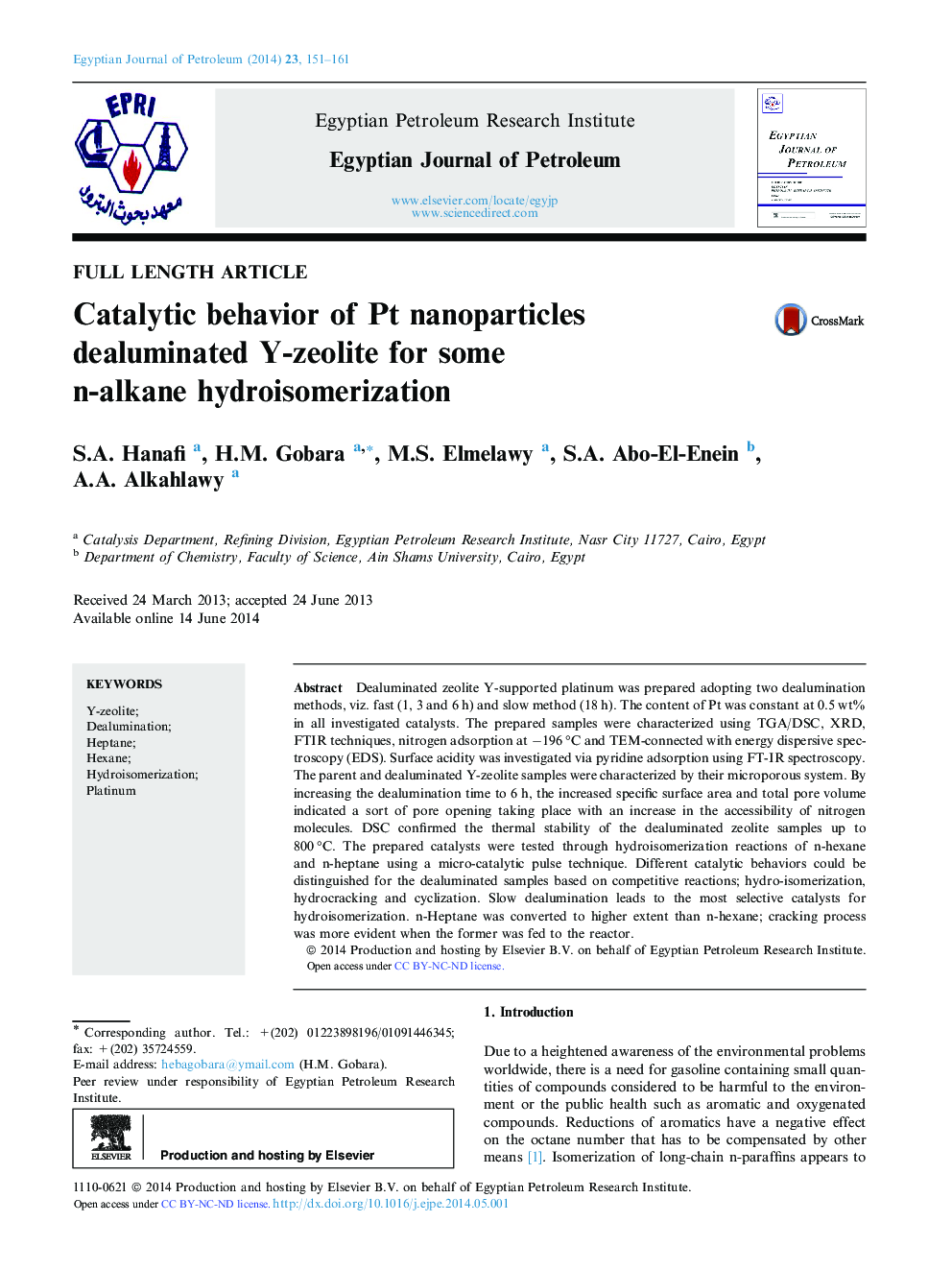| Article ID | Journal | Published Year | Pages | File Type |
|---|---|---|---|---|
| 1756915 | Egyptian Journal of Petroleum | 2014 | 11 Pages |
Abstract
Dealuminated zeolite Y-supported platinum was prepared adopting two dealumination methods, viz. fast (1, 3 and 6 h) and slow method (18 h). The content of Pt was constant at 0.5 wt% in all investigated catalysts. The prepared samples were characterized using TGA/DSC, XRD, FTIR techniques, nitrogen adsorption at â196 °C and TEM-connected with energy dispersive spectroscopy (EDS). Surface acidity was investigated via pyridine adsorption using FT-IR spectroscopy. The parent and dealuminated Y-zeolite samples were characterized by their microporous system. By increasing the dealumination time to 6 h, the increased specific surface area and total pore volume indicated a sort of pore opening taking place with an increase in the accessibility of nitrogen molecules. DSC confirmed the thermal stability of the dealuminated zeolite samples up to 800 °C. The prepared catalysts were tested through hydroisomerization reactions of n-hexane and n-heptane using a micro-catalytic pulse technique. Different catalytic behaviors could be distinguished for the dealuminated samples based on competitive reactions; hydro-isomerization, hydrocracking and cyclization. Slow dealumination leads to the most selective catalysts for hydroisomerization. n-Heptane was converted to higher extent than n-hexane; cracking process was more evident when the former was fed to the reactor.
Related Topics
Physical Sciences and Engineering
Energy
Energy (General)
Authors
S.A. Hanafi, H.M. Gobara, M.S. Elmelawy, S.A. Abo-El-Enein, A.A. Alkahlawy,
